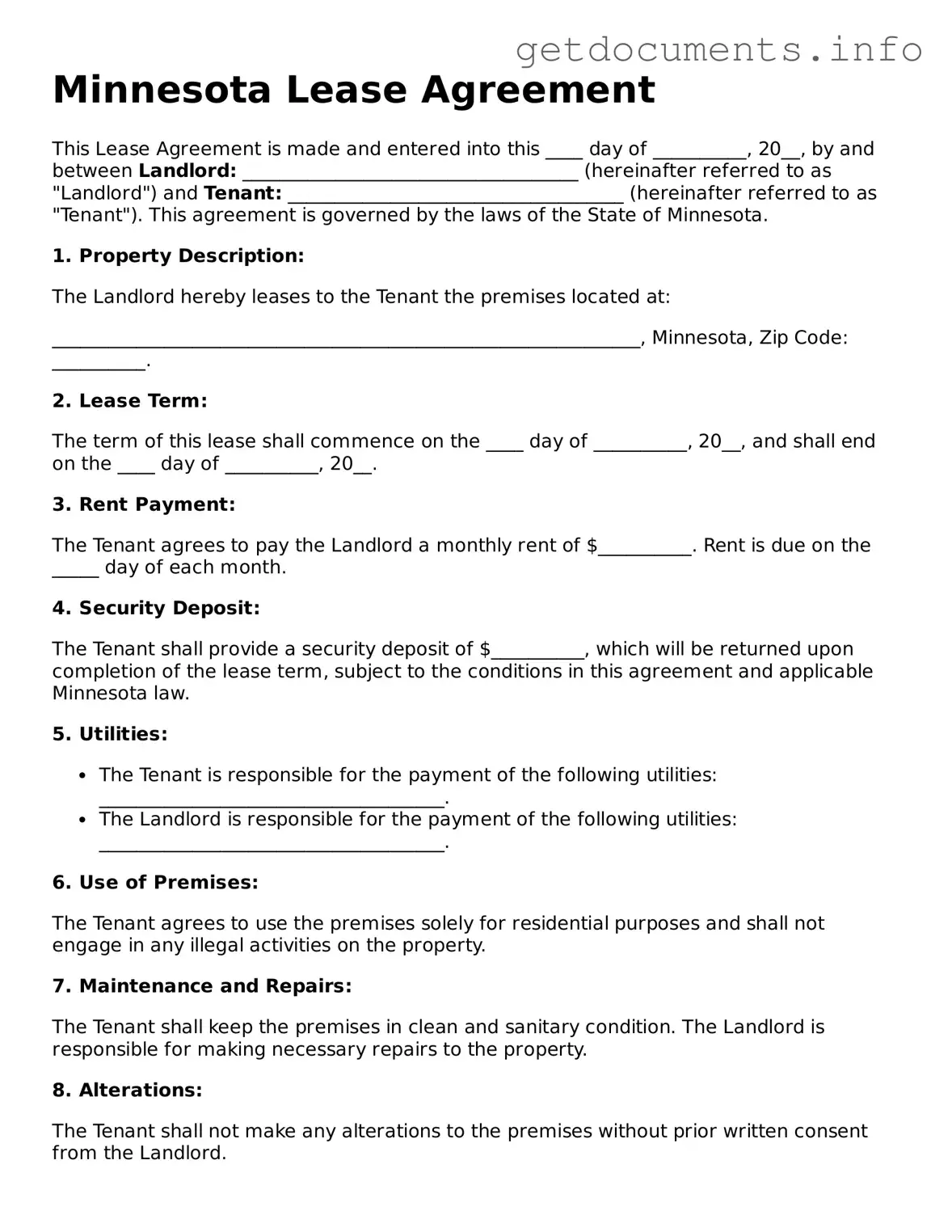Free Lease Agreement Template for Minnesota
A Minnesota Lease Agreement form is a legally binding document that outlines the terms and conditions between a landlord and tenant for renting a property. This form serves to protect the rights of both parties while ensuring clarity in the rental arrangement. To get started on your rental journey, fill out the form by clicking the button below.
Access Lease Agreement Editor
